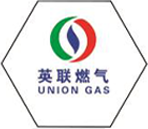
Dec . 04, 2024 16:39
Back to list
Pressure Reduction Station Design and Operational Efficiency Analysis
Understanding Pressure Reduction Stations
Pressure reduction stations are crucial components in the distribution of gases, particularly in the natural gas sector. These facilities play an essential role in managing the pressure of gas as it travels from high-pressure transmission pipelines to lower-pressure distribution systems, ensuring safety and efficiency in gas delivery to consumers.
What is a Pressure Reduction Station?
A pressure reduction station (PRS) is designed to reduce the pressure of gas through various mechanisms before it enters residential or industrial areas. Natural gas is transported through pipelines at high pressures, which can be dangerous if allowed to enter homes or businesses directly. Therefore, the PRS employs pressure-regulating valves, which reduce the pressure of the gas to safe levels for use.
Components of a Pressure Reduction Station
A typical pressure reduction station consists of several key components
1. Inlet Section This is where the high-pressure gas enters the PRS from a transmission line. It is equipped with safety features such as block valves to isolate the station during maintenance or in emergencies.
2. Pressure Regulating Valves (PRVs) The core of any PRS, these valves automatically adjust to maintain a consistent outlet pressure, regardless of fluctuations in the inlet pressure. They ensure that the gas delivered is within acceptable pressure limits.
3. Filters To prevent contaminants and debris from damaging the PRVs and downstream equipment, filters are installed within the PRS. These help maintain the quality of the gas being distributed.
.
5. Instrumentation and Control Systems Modern pressure reduction stations are equipped with monitoring systems that provide real-time data on pressure, temperature, and flow rates. These systems aid in automatic adjustments and alerts for any anomalies.
محطة تخفيض الضغط

Importance of Pressure Reduction Stations
The significance of PRSs can be summarized in several key points
1. Safety By reducing high-pressure gas to safe levels, PRSs play a pivotal role in preventing accidents. High-pressure gas can lead to explosions or leaks if not properly regulated.
2. Operational Efficiency These stations help maintain a stable pressure throughout the distribution network, allowing for efficient gas delivery to consumers. Inconsistent pressure can lead to equipment failures and increased operational costs.
3. Regulatory Compliance Many regions have strict regulations regarding gas pressure in distribution systems. PRSs help operators comply with these regulations by ensuring that gas pressure does not exceed specified limits.
4. Environmental Considerations By optimizing the pressure in gas distribution systems, PRSs contribute to reducing emissions associated with gas leaks, thus promoting environmental sustainability.
Challenges and Maintenance
While PRSs are vital for gas distribution, they do face challenges. Regular maintenance is critical to ensure their safe and efficient operation. This includes routine inspections, servicing of valves, and replacement of filters. Any failure in PRS components can lead to significant risks, including system outages or dangerous leaks.
Moreover, as the energy landscape evolves with increased focus on renewable energy sources, pressure reduction stations may need to adapt. Incorporating technologies that handle a mix of energy sources, including hydrogen or biomethane, could become necessary, requiring innovation and investment in infrastructure.
Conclusion
Pressure reduction stations are foundational to the safe and efficient distribution of natural gas. They regulate the pressure of gas, ensuring that it arrives at homes and businesses without the risk associated with high-pressure systems. As the energy sector continues to change, the role of PRSs will be paramount in navigating the complexities of modern gas distribution and ensuring a reliable energy supply for future generations. Understanding their operation and significance can foster greater appreciation for the infrastructure that supports our everyday energy needs.
Latest news
-
Safety Valve Spring-Loaded Design Overpressure ProtectionNewsJul.25,2025
-
Precision Voltage Regulator AC5 Accuracy Grade PerformanceNewsJul.25,2025
-
Natural Gas Pressure Regulating Skid Industrial Pipeline ApplicationsNewsJul.25,2025
-
Natural Gas Filter Stainless Steel Mesh Element DesignNewsJul.25,2025
-
Gas Pressure Regulator Valve Direct-Acting Spring-Loaded DesignNewsJul.25,2025
-
Decompression Equipment Multi-Stage Heat Exchange System DesignNewsJul.25,2025

